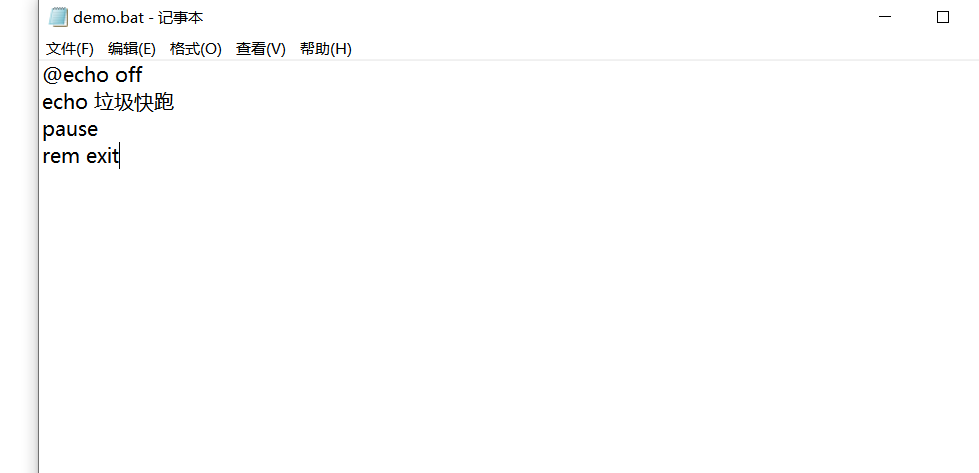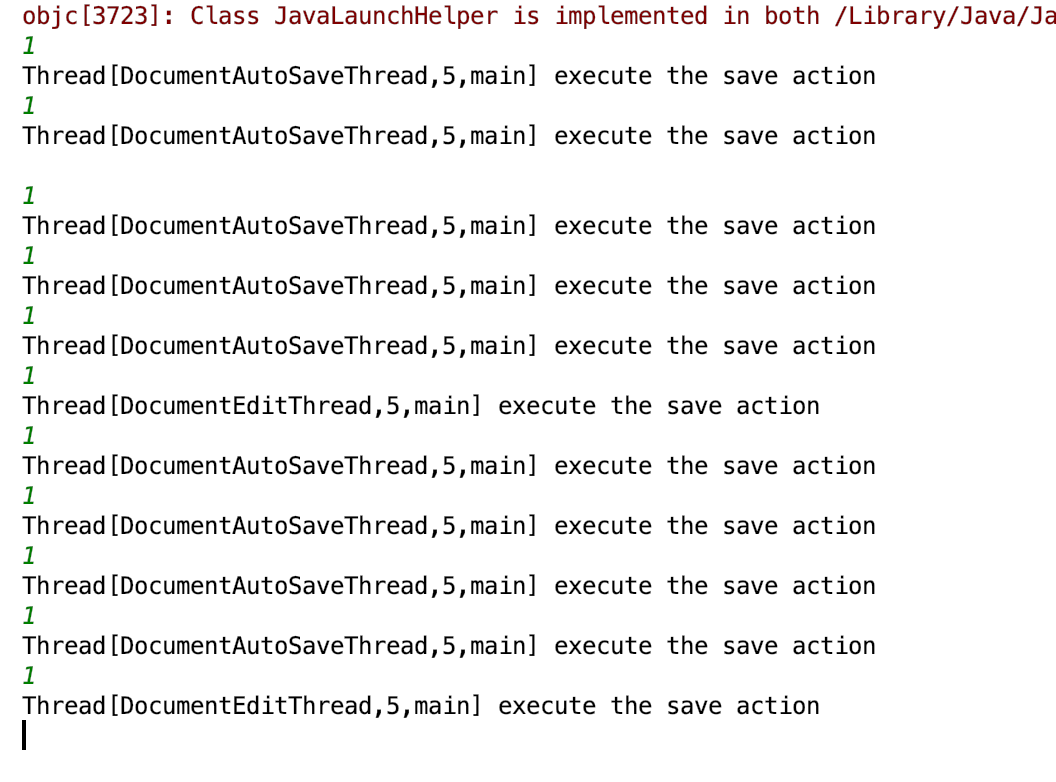static关键字+静态代码块+继承及Arrays
static关键字+静态代码块+继承及Arrays
一、static关键字
1.含义:静态的
2.作用:
1.静态属性
2.静态方法
3.静态代码
3.static属性
1.含义:该属性属于类属性,不属于任何的对象
2.静态变量的生命周期:
创建:类加载到方法区时,系统会扫描该类的静态变量,并把静态变量加载到静态区中
销毁:程序结束时销毁
3.应用场景:该类所有的对象都共享的变量,就使用静态属性
4.注意:static修饰属性,该属性属于类的属性,直接用类名调用
public class Test01 {public static void main(String[] args) {A a1 = new A();A a2 = new A();a1.str1 = "aaa";a2.str1 = "bbb";System.out.println(a1.str1);//aaaSystem.out.println(a2.str1);//bbb//a1.str2 = "xxx";//a2.str2 = "yyy";//System.out.println(a1.str2);//yyy//System.out.println(a2.str2);//yyyA.str2 = "xxx";A.str2 = "yyy";System.out.println(A.str2);//yyySystem.out.println(A.str2);//yyy}}public class A {//属性/全局变量:成员变量 和 静态变量//成员变量String str1;//静态变量static String str2;}
二、Arrays工具类包
import com.qf.arrays.MyArrays;public class Test01 {public static void main(String[] args) {int[] is = {35,81,18,25,9,10,11,12,13};//排序 - 9,10,11,12,13,18,25,35,81MyArrays.sort(is);//搜索 - (注意:必须先排序,再查找,因为底层使用的是二分法查找)//返回元素在数组中的下标;如果元素不在数组中则返回 -插入点-1int index = MyArrays.binarySearch(is,35);System.out.println("搜索元素的下标为:" + index);//拷贝数组/扩容数组int[] newIs1 = MyArrays.copyOf(is,is.length*2);//拷贝数组(开始下标-包含,结束下标-不包含)int[] newIs2 = MyArrays.copyOfRange(newIs1,3,6);//替换MyArrays.fill(newIs2,888);//将数组转换为字符串String str = MyArrays.toString(newIs2);System.out.println(str);}}/*** 史上最牛逼的数组工具类* @author 高雷* @version 1.0*/public class MyArrays {/*** 按照数字顺序排序指定的数组* @param a 按照数字顺序排列指定数组*/public static void sort(int[] a) {for (int i = 0; i < a.length-1; i++) {for (int j = 0; j < a.length-1-i; j++) {if (a[j] > a[j+1]) {int temp = a[j];a[j] = a[j+1];a[j+1] = temp;}}}}/*** 使用二叉搜索算法搜索指定的int数组的指定值。* @param a 要搜索的数组* @param key 要搜索的值* @return 搜索键的索引,如果它包含在数组中; 否则, (-(insertion point) - 1)*/public static int binarySearch(int[] a,int key) {int start = 0;int end = a.length-1;while (start <= end) {int mid = (start + end)/2;if (key > a[mid]) {start = mid +1;}else if(key < a[mid]){end = mid -1;}else{return mid;}}return - start-1;}/*** 将指定的int值分配给指定的int数组的每个元素。* @param a 要填充的数组* @param val 要存储在数组的所有元素中的值*/public static void fill(int[] a,int val){for (int i = 0; i < a.length; i++) {a[i] = val;}}/*** 将指定的int值分配给指定的int数组的指定范围的每个元素。* @param a 要填充的数组* @param fromIndex 要用指定值填充的第一个元素(包括)的索引* @param toIndex 要用指定值填充的最后一个元素(排除)的索引* @param val 要存储在数组的所有元素中的值*/public static void fill(int[] a,int fromIndex,int toIndex,int val){for (int i = fromIndex; i < toIndex; i++) {a[i] = val;}}/*** 复制指定的数组,用零截取或填充(如有必要),以便复制具有指定的长度。* @param original 要复制的数组* @param newLength 要返回的副本的长度* @return 原始数组的副本,被截断或用零填充以获得指定的长度*/public static int[] copyOf(int[] original,int newLength){int[] is = new int[newLength];for (int i = 0; i < original.length; i++) {is[i] = original[i];}return is;}/*** 将指定数组的指定范围复制到新数组中。* @param original 要复制的数组* @param from 要复制的范围的初始索引(包括)* @param to 要复制的范围的最终索引,排他。 (该索引可能位于数组之外)* @return 一个包含原始数组的指定范围的新数组,用零截取或填充以获得所需的长度*/public static int[] copyOfRange(int[] original, int from, int to){int[] is = new int[to-from];int index = 0;for (int i = from; i < to; i++) {is[index] = original[i];index++;}return is;}/*** 返回指定数组的内容的字符串表示形式。* @param a 要返回其字符串表示形式的数组* @return 一个字符串表示 a*/public static String toString(int[] a){String str = "[";for (int i = 0; i < a.length; i++) {str += a[i];if (i != a.length-1) {str += ",";}}str += "]";return str;}}
三、静态代码块
1.构造方法的应用场景:初始化成员变量和静态变量
2.代码块:很少用
3.静态代码块:初始化静态变量
4.静态代码块为什么不能操作成员变量:
因为静态代码块是类加载到方法区时调用的,这时对象还没有创建
public class Test01 {public static void main(String[] args) {A a1 = new A();A a2 = new A();}}public class A {String str1;//成员属性static String str2;//静态属性//静态代码块:类加载到方法区时调用//只能初始化静态属性static{str2 = "用真心待人";System.out.println("A类的静态代码块--" + str2);}//代码块:创建对象时优先于构造方法调用//可以初始化成员属性和静态属性{str1 = "xxx";str2 = "yyy";System.out.println("A类的代码块" + str1 + "--" + str2);}//构造方法:创建对象时调用//可以初始化成员属性和静态属性public A(){str1 = "aaa";str2 = "bbb";System.out.println("A类的构造方法" + str1 + "--" + str2);}}
四、继承
1.含义:子类继承父类的属性和方法
2.好处:解决代码的冗余
3.应用场景:分析多个类时发现,多个类有相同的属性和方法,就把相同的属性和方法抽取到父类中
需求:编写中国人和日本人的类
人类:
- 属性:姓名、性别、年龄
- 方法:吃饭饭、睡觉觉
中国人类 继承 人类:
- 属性:身份证
- 方法:打太极
日本人类 继承 人类:
- 属性:年号
- 方法:拍电影
public class Test01 {public static void main(String[] args) {Chinese c = new Chinese();//设置父类的属性c.name = "张三丰";c.sex = '男';c.age = 120;//设置子类的属性c.id = "123456789";//获取父类的属性System.out.println(c.name);System.out.println(c.sex);System.out.println(c.age);//获取子类的属性System.out.println(c.id);//调用父类的方法c.eat();c.sleep();//调用子类的方法c.playTaiji();System.out.println("----------------------------");Japanese j = new Japanese();//设置父类的属性j.name = "波多";j.sex = '女';j.age = 18;//设置子类的属性j.yearNum = "昭和";//获取子类的属性j.yearNum = "昭和";//获取父类的属性System.out.println(j.name);System.out.println(j.sex);System.out.println(j.age);//获取子类的属性System.out.println(j.yearNum);//调用父类的方法j.eat();j.sleep();//调用子类的方法j.playVideo();}}//父类public class Person {String name;char sex;int age;public void eat(){System.out.println("吃饭饭");}public void sleep(){System.out.println("睡觉觉");}}// 子类 继承 父类public class Chinese extends Person {String id;public void playTaiji(){System.out.println("打太极");}}public class Japanese extends Person {String yearNum;public void playVideo(){System.out.println("拍视频");}}



































还没有评论,来说两句吧...